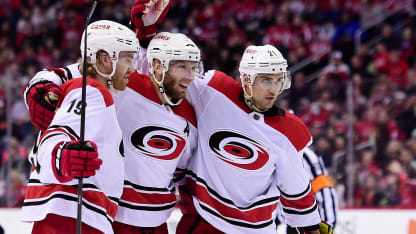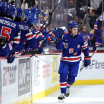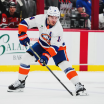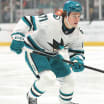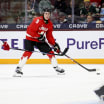Since 2009-10, three teams have finished an NHL season with a 5-on-5 shooting percentage of less than 6.0 percent: the 2014-15 Arizona Coyotes, (5.7 percent), the 2012-13 Florida Panthers (5.8 percent) and the 2013-14 Buffalo Sabres (5.8 percent).
Through the end of December, the Hurricanes were shooting 5.5 percent at 5-on-5, an abnormally low percentage. This suggested their fortunes would improve unless they were the worst-shooting team of the past decade. Carolina might not have an established group of scorers, especially after trading forward Jeff Skinner to Buffalo in August, but there was little to suggest the Hurricanes would be historically bad at putting the puck in the net.
To be fair, the Hurricanes have not been a strong team when it comes to team shooting percentage. From 2013-14 through 2017-18, the Hurricanes had a 5-on-5 shooting percentage of 6.6 percent. The only team worse during that five-year span was the Sabres (6.5 percent). While 6.6 percent is unimpressive relative to the rest of the NHL, it's still notably better than the 5.5 percent the Hurricanes were managing through the end of December this season.
An increase in shooting percentage, the numbers suggested, should lead to an increase in scoring. That is what has happened: Carolina is shooting 9.0 percent in the past 38 games.
The Hurricanes are also getting better performance from their goalies during their charge toward the postseason. Curtis McElhinney has been steady, posting a .915 save percentage in 30 games. But the real difference-maker down the stretch has been Petr Mrazek, who has a .933 save percentage in 14 starts since the All-Star break; he had an .893 save percentage in his first 23 games.
The Hurricanes have consistently been getting the better of shot differentials, and now they are pairing that with improved shooting and save percentages.
There are a few more factors that have contributed to Carolina's improvement. Veteran center Jordan Staal returned to the lineup Feb. 23, after missing two months with a concussion. He has 12 points (four goals, eight assists) in 15 games while helping the Hurricanes to a 10-4-1 record. Staal is a factor for the Hurricanes because he controls play.
